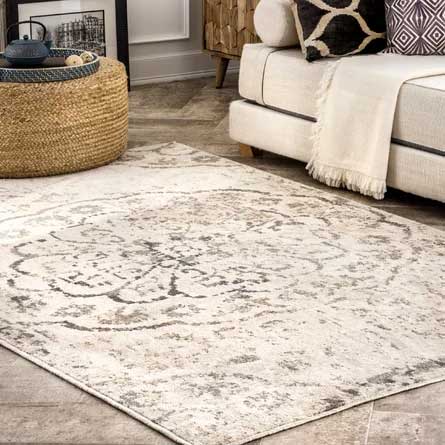How to dog-proof a living room – 6 tips from designers (and pet owners) who have done it successfully
Because getting the balance between form and function is even more key when you add a furry friend
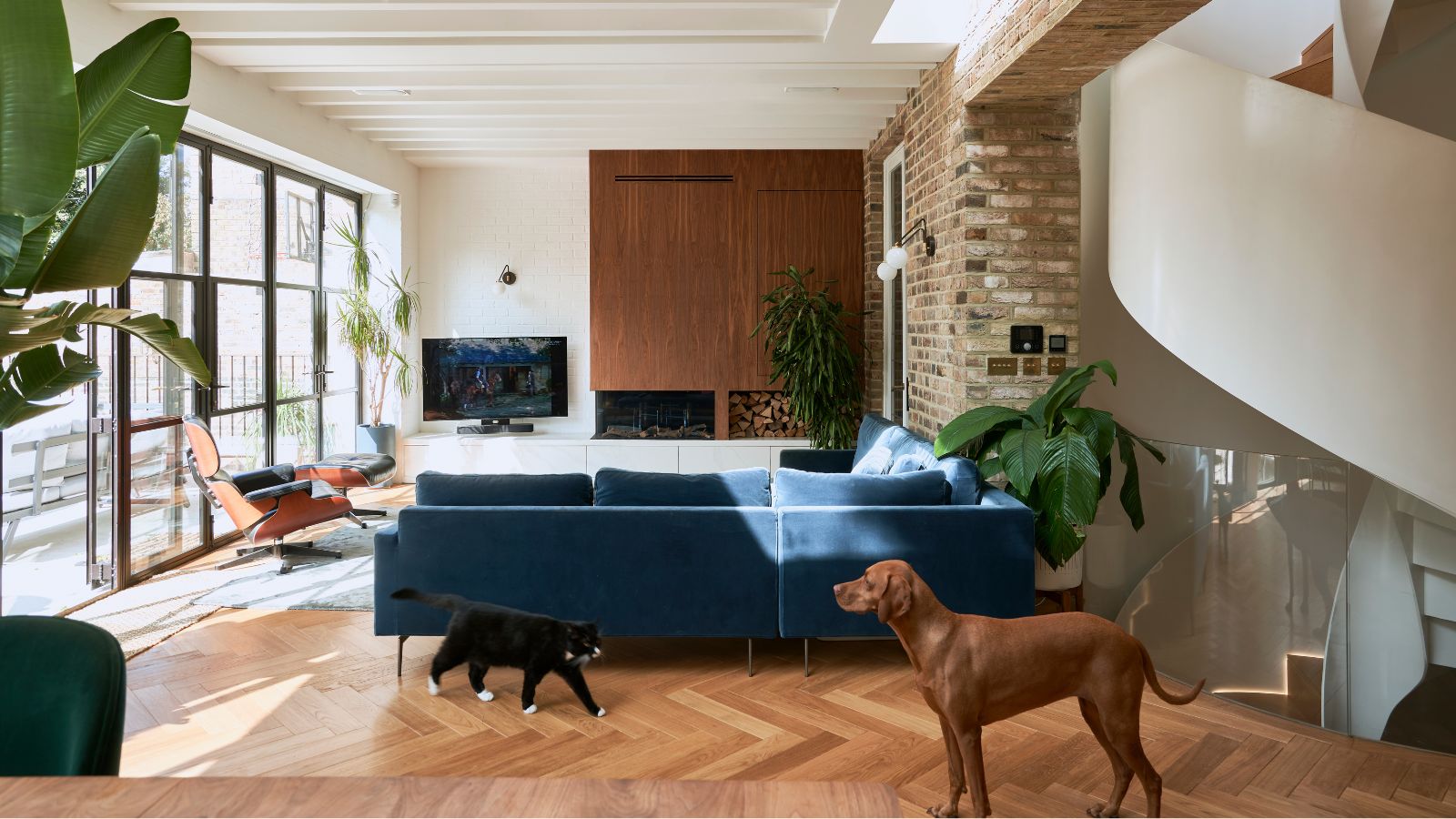

As both a dog owner and a house-proud interior design lover, I know the woes of trying to design a living room that's aesthetically beautiful, but practically it needs to be dog-proof. I'm lucky enough that my dog is no longer a chewer, but she is a shedder, and obviously, still, a small living creature that's prone to bring in mud and mess and disheveled dirty toys.
But it is possible to get this balance between form and function right and design a space that works for both of you. It's usually just a case of choosing the right colors for your furniture that won't need a wipe down every time your dog merely thinks about jumping on the couch, patterns that can hide potentially muddy paws and fabrics that can handle the wear and tear of pet ownership.
We spoke with designers who have created spaces for dog owners, or are dog owners themselves, about how to design living rooms that look glorious and are equally dog-proof.
1. Pick robust fabrics
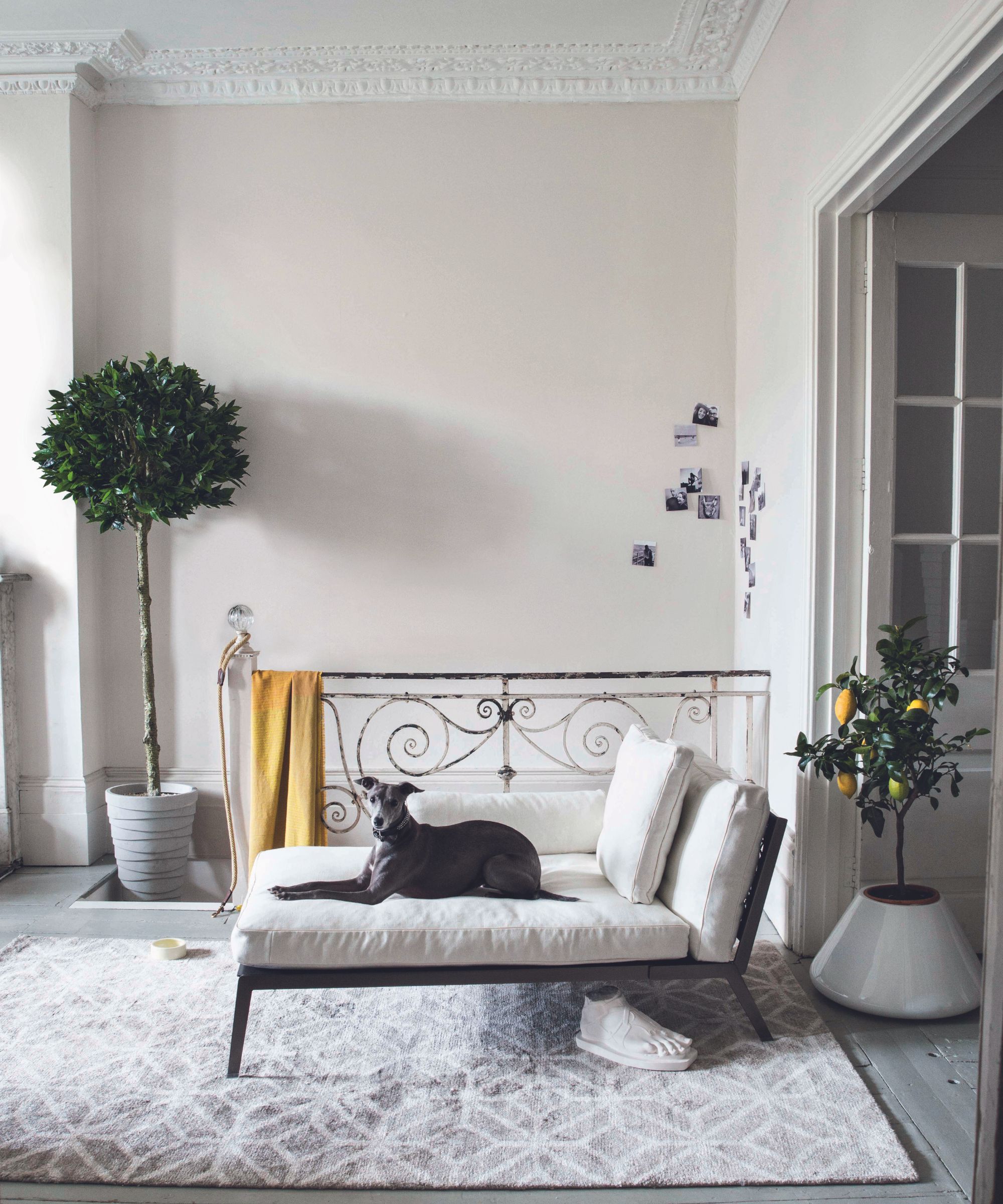
This is the big one. If you own a dog you need to pick fabrics for your living room furniture that can handle it. If you own a pale velvet sofa, it stands no chance and you'll constantly be trying to clean up the smallest scratch or stain, you are far better choosing fabrics that need less care from the off.
'In general, the best thing you can do to dog-proof your living room is to choose furniture and rug options that are designed to stand up to a pet's presence. Rather than worry about the effect of your dog on a delicately upholstered sofa, go with a performance option!' advises designer Kathy Kuo. 'Ditto for rugs. These days, performance rugs and upholstery are just as beautiful and twice as durable as their counterparts, and performance fabric is great for homes with young children too.'
Brittany Wurzak Hakimfar lead designer at Far Studio agrees that, 'For dog proofing, we treat it like kid proofing - use durable and stain proof fabrics. we also always have our clients' furniture sealed once we install it so that they don't have to worry about spills or accidents.'
'Leather or faux leather are winners for dog owners. They're easy to clean and resist punctures. If leather isn't your thing, opt for tightly woven fabrics. These make it hard for claws to latch on, reducing potential tear.' adds Artem Kropovinsky founder of Arsight.
This is a great tip to test if your fabric is dogproof – 'Run an open paperclip along the weave. If it gets caught, the little claws will also likely get caught too. I find leather, tightly woven fabrics like performance velvets, performance materials, and a stain-proof sealant on top of rugs and textiles can help the longevity of upholstery.' suggests Keren Ritcher, co-founder of White Arrow.
2. Protect your furniture
And if you want to give your furniture a fighting chance against your dog, consider adding an extra layer of protection. A washable yet stylish throw, or a chic dog bed that you can place on your seating if you do indeed let your dog on the couch (no judgment here, I do).
'I have dogs in my home and I find a thin dog bed that can be easily washed and made from a fabric that matches your living room color scheme works best for protecting furniture,' explains Marta Chrapka, founder of Colombe. 'I also have clients who care about the comfort of their pets and we have done upholstered sofas specifically for the dog so they have someone of their own to relax.'
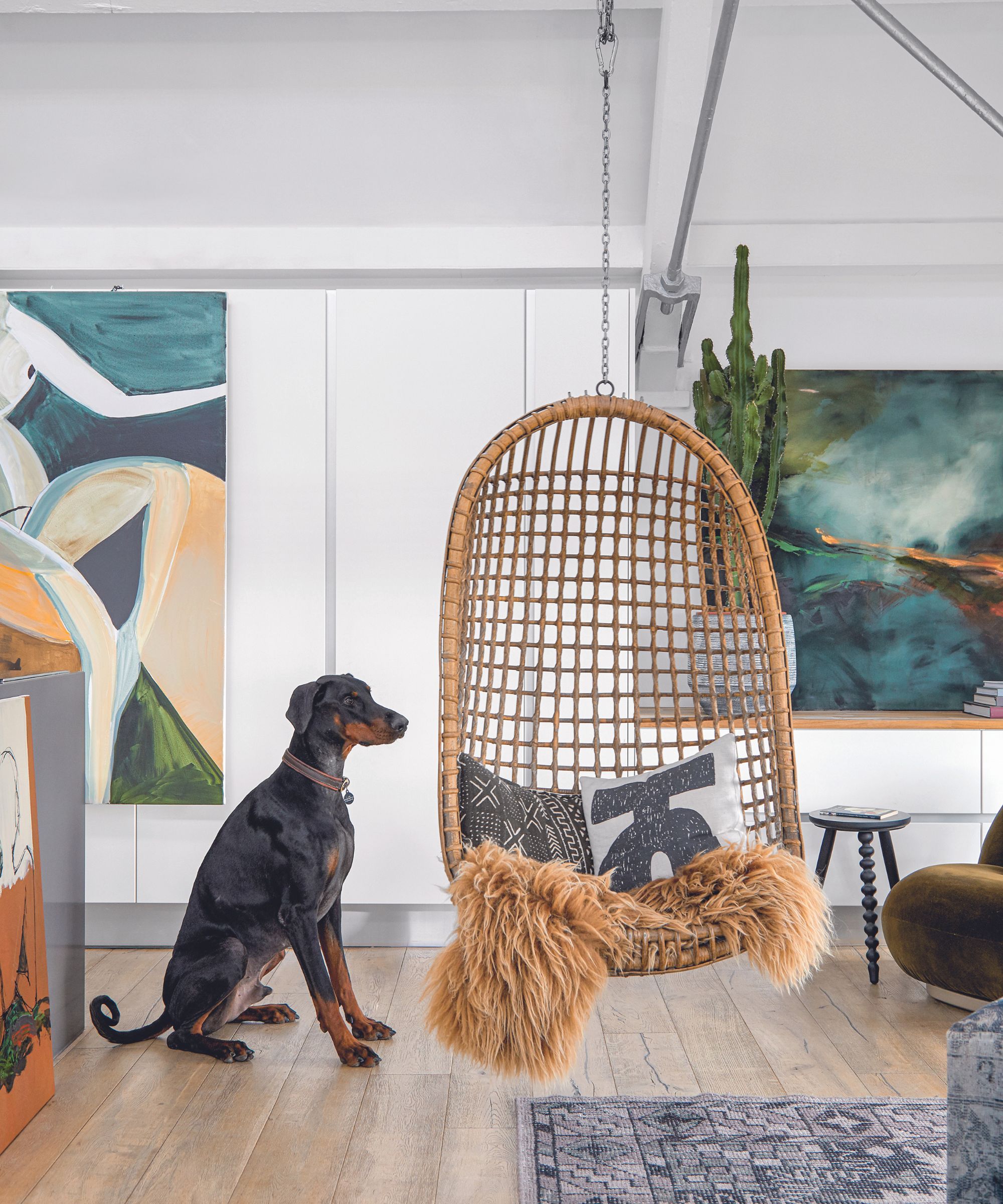
3. Choose a forgiving color palette and patterns
I am a lover of a light and bright neutral living room, I in fact have a pretty light and bright neutral living room, but there are neutral tones that are more dogproof. For example, my walls are white, which works fine as my dog isn't a muddy one and she wouldn't be in that space covered in mud anyways. But she does sit on the couch, so that's beige – the same color as her. And the rug is a dark jute, a very durable fabric that hides both fur and any muddy paws – I have had it for years and it looks good as new.
The overall effect is light and neutral, but I have chosen forgiving colors where the dog is most likely to have an impact. You'll know best what's going to work for you and your pet – a good rule of thumb if you have a dog that sheds fur is to pick colors that match them. And if you have a dog that loves the mud, just avoid any lighter colors altogether.
'The colors we choose can either showcase or hide the everyday wear and tear that comes with having a dog. Consider earthy tones like taupe, browns, and soft greens. They not only provide a sophisticated canvas but also effortlessly camouflage pet hair and the occasional mishap.' advises Artem Kropovinsky.
And pick patterns that will help hide mess too. As Artem adds, 'Incorporate patterns that already have a bit of 'chaos' in them. Distressed patterns or abstract designs tend to mask minor stains or scratches better than solid, stark fabrics.'
4. Pick the right rug to protect the floor
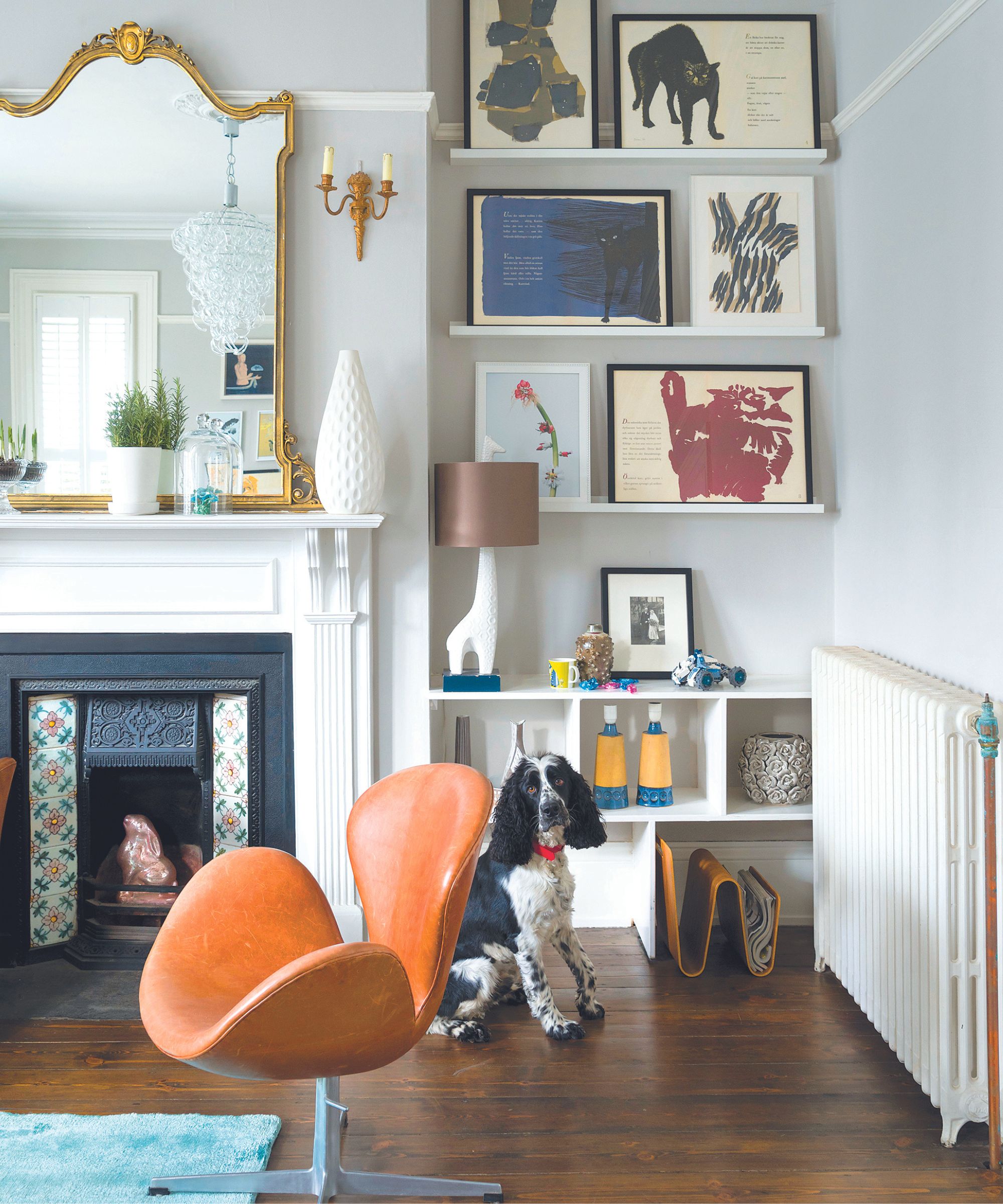
A rug is a must-have to dog-proof your living room. A living room rug can be easily be replaced and it will protect your floors, especially if you have wooden flooring that will be especially susceptible to scratches.
Again pick a fabric and pattern that will be able to cope with the potential wear and tear and being used as a toy on the odd occasion. When my dog was a puppy (or even now if she wants attention) she would pull up the edge of the rug. No harm ever came of the rug because it was a robust jute that she couldn't easily pull apart.
'I avoid viscose at all costs for rugs — it’s terrible for water and staining. Instead, stick with rugs with wool, indoor/outdoor rugs, vintage rugs that are a bit distressed or have interesting patterns to hide any wear, and Moroccan Touregs,' suggests Keren Ritcher. 'I also like to ask our clients about shedding and the color of their pet hair – nothing worse than seeing it all day. I’ll source stylish dog beds and accessories like toy storage baskets to incorporate their important family member into the room's design too.'
'When it comes to area rugs, we do see a good amount of damage from dogs' adds designer Pamela O’Brien. 'Stains from accidents are common but most can be managed by a professional carpet cleaner. We have had incidents of dogs chewing on the ends of carpets – near the corners and along the edges. This usually happens in looser weave rugs that the dogs can sink their teeth into. This is a harder problem to solve and solutions are pricier so the best option would be to select tighter weaves, denser piles and indoor/outdoor style rugs that aren’t as attractive for chewing purposes.'
5. Consider the safety elements too
This might take a slight rearranging of your living room layout, but if you are concerned about your dog and how it behaves around cables, ensure that any pieces of tech or lighting that you use regularly are nearby to plug sockets so you don't have wires trailing about the room. Safety should be considered as well as the aesthetics when dog-proofing your living room.
'I go through the room and think what can be a threat – in my case, it was an open fireplace and an above-average love of a dog for sticks. It was the most important aspect of safety and apart from the screen and metal shields, we stopped using it at all in the end.' explains Marta Chrapka.
'Another thing to consider is tech, chargers, and lamps permanently plugged into sockets. Dogs love to chew on cables. I have a standard habit of making spare sockets right on the window sill and basically only use these for equipment that needs to be on most of the time.'
Only bring pet-friendly houseplants into your home too. Always do your research when picking out your greenery. If your dog does like to chew plants, keep them out of the way and up on shelving or side tables.
6. Provide more exciting toys than your couch
This is the easiest way to dog-proof your home. Provide things that are more thrilling than your decor and furniture. Always have toys available in your living room for your dog's entertainment that you can have on hand if they start to pay too much attention to your soft furnishings.
I have a storage basket in the living room that fits with the overall aesthetic and is just for dog toys. When I first got a dog toys were constantly strewn around the living room – not the chicest of accessories, investing in a sturdy but stylish storage solution corralled the clutter and also meant that the dog now knows to go to that basket when she wants to play rather than taking it out on the furniture.
Be The First To Know
The Livingetc newsletters are your inside source for what’s shaping interiors now - and what’s next. Discover trend forecasts, smart style ideas, and curated shopping inspiration that brings design to life. Subscribe today and stay ahead of the curve.

Formerly the Digital Editor of Livingetc, Hebe is currently the Head of Interiors at sister site Homes & Gardens; she has a background in lifestyle and interior journalism and a passion for renovating small spaces. You'll usually find her attempting DIY, whether it's spray painting her whole kitchen, don't try that at home, or ever-changing the wallpaper in her entryway. She loves being able to help others make decisions when decorating their own homes. A couple of years ago she moved from renting to owning her first teeny tiny Edwardian flat in London with her whippet Willow (who yes she chose to match her interiors...) and is already on the lookout for her next project.
-
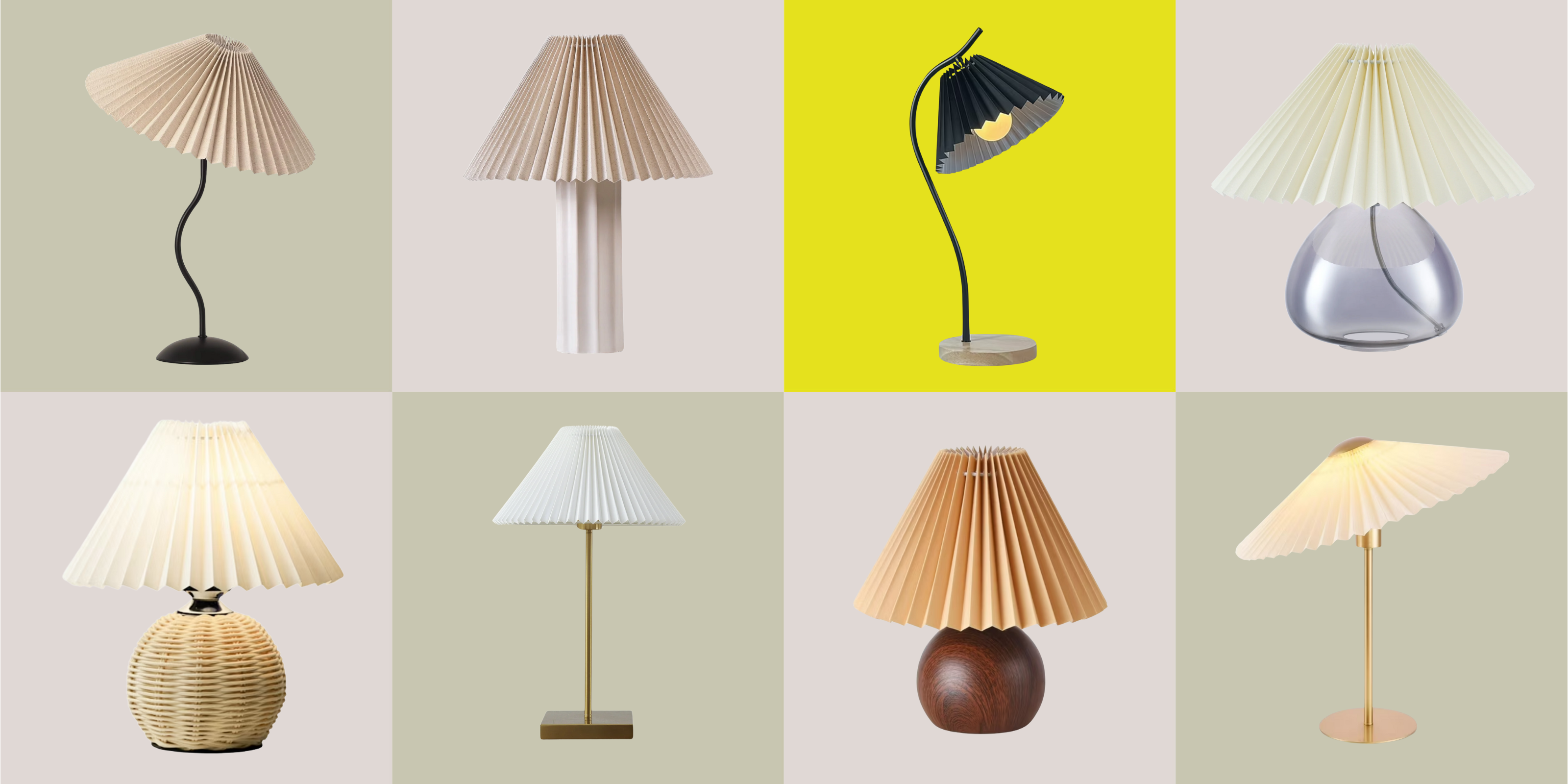 Pleated Lampshades Are the Silhouette of the Season — I've Found 9 For Well Under $100 (You'll Never Guess Where)
Pleated Lampshades Are the Silhouette of the Season — I've Found 9 For Well Under $100 (You'll Never Guess Where)Leave it to Walmart to bless us with a collection of stunning pleated lampshades — proving this old-fashioned feature can look fresh and modern
By Devin Toolen
-
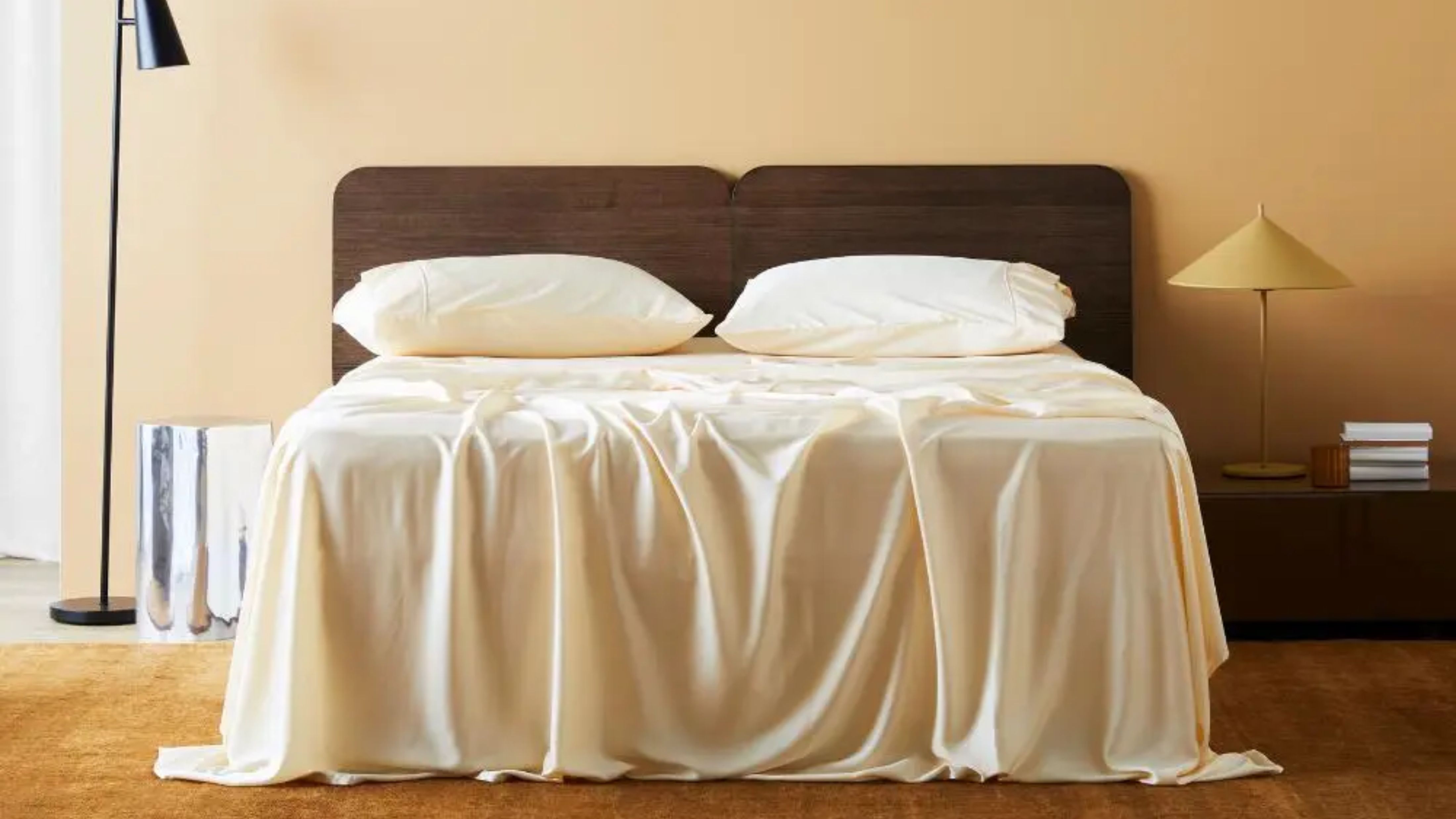 I Found the "Healthiest” Bedding for Earth Month — Why Ettitude Is the Sustainable Sleep Label to Know
I Found the "Healthiest” Bedding for Earth Month — Why Ettitude Is the Sustainable Sleep Label to KnowSofter than silk and smarter than cotton, Ettitude’s innovative take on bedding delivers luxury with a conscience
By Julia Demer
